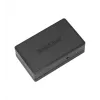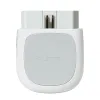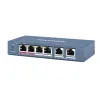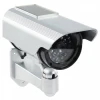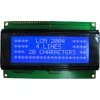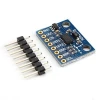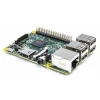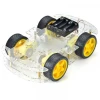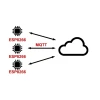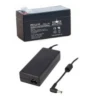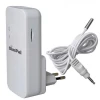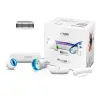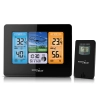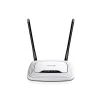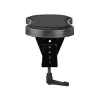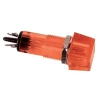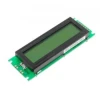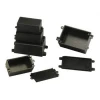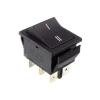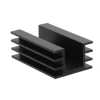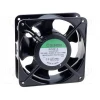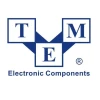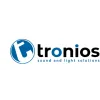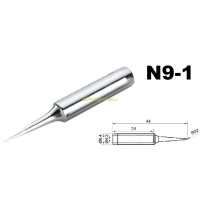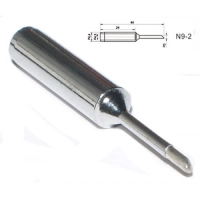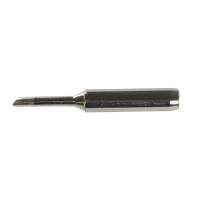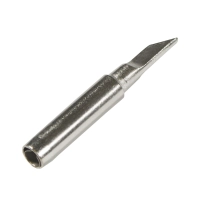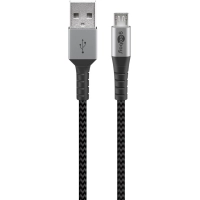RASPBERRY PI PICO 2 Cortex-M33
SKU: SC1631
- 8.50 €
-
- Customer price 8.08 € -5%
- Log in and get at least a 5% discount
Pealadu
Tallinn, Peterburi tee 90F
Tallinn, Peterburi tee 90F
7 pcs
Peterburi tee Oomipood
Tallinn, Peterburi tee 90F
Tallinn, Peterburi tee 90F
1 pcs
Järve keskuse Oomipood
Tallinn, Pärnu mnt. 238
Tallinn, Pärnu mnt. 238
10 pcs
Lõunakeskuse Oomipood
Tartu, Lääneringtee 39
Tartu, Lääneringtee 39
0 pcs
Põhjakeskuse Oomipood
Rakvere, Haljala tee 4
Rakvere, Haljala tee 4
0 pcs
Kaubamajaka Oomipood
Pärnu, Papiniidu 8
Pärnu, Papiniidu 8
1 pcs
Raspberry Pi Pico 2 Overview
The Raspberry Pi Pico 2 (SC1631) is a high-performance, secure, and flexible microcontroller board based on the Raspberry Pi RP2350 microcontroller. Designed as a successor to the original Raspberry Pi Pico, it offers enhanced processing power, increased memory, and advanced security features while maintaining hardware and software compatibility.
Key Features
- Dual-Core Architecture:
- Equipped with either dual Arm Cortex-M33 cores or dual RISC-V Hazard3 cores, providing flexibility in selecting the appropriate architecture for the application.
- Cores operate at a frequency of 150 MHz.
- Memory:
- 520 KB on-chip SRAM for data storage and processing.
- 4 MB on-board QSPI flash memory for program storage.
- Security Features:
- Arm TrustZone architecture for enhanced security.
- Secure boot mechanism to prevent unauthorized firmware execution.
- 8KB of anti-fuse OTP for key storage.
- SHA-256 acceleration for cryptographic operations.
- Hardware TRNG (True Random Number Generator).
- Fast glitch detectors.
- Connectivity and Interfacing:
- 26 multi-purpose GPIO pins for connecting to various external devices and sensors.
- 2 x UART, 2 x SPI, and 2 x I2C controllers for serial communication.
- 24 PWM channels for controlling motors, LEDs, and other analog devices.
- USB 1.1 host/device support for power and data transfer.
- Three Programmable I/O (PIO) blocks with 12 state machines for custom peripheral support.
- Low Power Consumption:
- Manufactured on a 40nm process node for low dynamic power consumption.
- Offers various low-power modes to support extended battery operation.
- Software and Development:
- Programmable in C/C++ and MicroPython.
- Comprehensive documentation and a polished MicroPython port ensure a smooth development experience.
- Open source C/C++ SDK.
- Form Factor and Compatibility:
- Compact size and mechanical compatibility with the original Raspberry Pi Pico.
- Same GPIO pinout and micro-USB connector for power and programming.
Ideal Use Cases and Benefits
- IoT Applications: Ideal for industrial IoT deployments with demanding I/O requirements.
- Embedded Computing: Suitable for cost-optimized embedded computing solutions.
- Prototyping: A powerful solution for rapid prototyping and experimentation.
- Education: Accessible to both beginners and advanced users due to extensive documentation and software support.
- Complex Hardware Integration: The second-generation Programmable I/O (PIO) subsystem and rich peripheral set allow for highly customizable interfacing with minimal CPU overhead.
- Portable Applications: Suitable for portable and energy-sensitive applications due to efficient power use and low-power modes.
Additional Highlights
- Dual-core architecture boosts processing power compared to the original RP2040.
- Flexibility to switch between ARM and RISC-V cores to tailor performance to specific application needs.
- Enhanced clock speed and improved core architecture.
- The RP2350 security architecture, including the secure boot ROM, are extensively documented and available to all users without restriction.
- The wireless variant Raspberry Pi Pico 2 W offers 2.4GHz 802.11n wireless LAN and Bluetooth 5.2, with an on-board antenna, and modular compliance certification.
The Raspberry Pi Pico 2 (SC1631) is a high-performance, secure, and flexible microcontroller board based on the Raspberry Pi RP2350 microcontroller. Designed as a successor to the original Raspberry Pi Pico, it offers enhanced processing power, increased memory, and advanced security features while maintaining hardware and software compatibility.
Key Features
- Dual-Core Architecture:
- Equipped with either dual Arm Cortex-M33 cores or dual RISC-V Hazard3 cores, providing flexibility in selecting the appropriate architecture for the application.
- Cores operate at a frequency of 150 MHz.
- Memory:
- 520 KB on-chip SRAM for data storage and processing.
- 4 MB on-board QSPI flash memory for program storage.
- Security Features:
- Arm TrustZone architecture for enhanced security.
- Secure boot mechanism to prevent unauthorized firmware execution.
- 8KB of anti-fuse OTP for key storage.
- SHA-256 acceleration for cryptographic operations.
- Hardware TRNG (True Random Number Generator).
- Fast glitch detectors.
- Connectivity and Interfacing:
- 26 multi-purpose GPIO pins for connecting to various external devices and sensors.
- 2 x UART, 2 x SPI, and 2 x I2C controllers for serial communication.
- 24 PWM channels for controlling motors, LEDs, and other analog devices.
- USB 1.1 host/device support for power and data transfer.
- Three Programmable I/O (PIO) blocks with 12 state machines for custom peripheral support.
- Low Power Consumption:
- Manufactured on a 40nm process node for low dynamic power consumption.
- Offers various low-power modes to support extended battery operation.
- Software and Development:
- Programmable in C/C++ and MicroPython.
- Comprehensive documentation and a polished MicroPython port ensure a smooth development experience.
- Open source C/C++ SDK.
- Form Factor and Compatibility:
- Compact size and mechanical compatibility with the original Raspberry Pi Pico.
- Same GPIO pinout and micro-USB connector for power and programming.
Ideal Use Cases and Benefits
- IoT Applications: Ideal for industrial IoT deployments with demanding I/O requirements.
- Embedded Computing: Suitable for cost-optimized embedded computing solutions.
- Prototyping: A powerful solution for rapid prototyping and experimentation.
- Education: Accessible to both beginners and advanced users due to extensive documentation and software support.
- Complex Hardware Integration: The second-generation Programmable I/O (PIO) subsystem and rich peripheral set allow for highly customizable interfacing with minimal CPU overhead.
- Portable Applications: Suitable for portable and energy-sensitive applications due to efficient power use and low-power modes.
Additional Highlights
- Dual-core architecture boosts processing power compared to the original RP2040.
- Flexibility to switch between ARM and RISC-V cores to tailor performance to specific application needs.
- Enhanced clock speed and improved core architecture.
- The RP2350 security architecture, including the secure boot ROM, are extensively documented and available to all users without restriction.
- The wireless variant Raspberry Pi Pico 2 W offers 2.4GHz 802.11n wireless LAN and Bluetooth 5.2, with an on-board antenna, and modular compliance certification.
ADC Pins: 4 (can also be used as GPIO)
CPU: Dual Arm Cortex-M33 or dual RISC-V Hazard3 processors
CPU Clock Speed: 150 MHz
Debug Interface: SWD
Dimensions: 51 x 21 mm
Flash Memory: 4 MB on-board QSPI
GPIO Pins: 26 multi-purpose
I2C Controllers: 2
Input Voltage: 1.8 to 5.5V DC
Operating Temperature: -20°C to +85°C
PWM Channels: 24
SPI Controllers: 2
SRAM: 520 KB
UART: 2
USB: 1 x USB 1.1 host/device
CPU: Dual Arm Cortex-M33 or dual RISC-V Hazard3 processors
CPU Clock Speed: 150 MHz
Debug Interface: SWD
Dimensions: 51 x 21 mm
Flash Memory: 4 MB on-board QSPI
GPIO Pins: 26 multi-purpose
I2C Controllers: 2
Input Voltage: 1.8 to 5.5V DC
Operating Temperature: -20°C to +85°C
PWM Channels: 24
SPI Controllers: 2
SRAM: 520 KB
UART: 2
USB: 1 x USB 1.1 host/device
SC1631 Datasheet EN
Download
Download




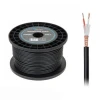
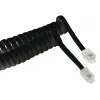






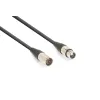







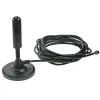
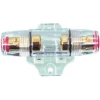
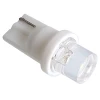
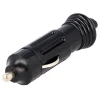




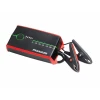



-100x100.webp)
